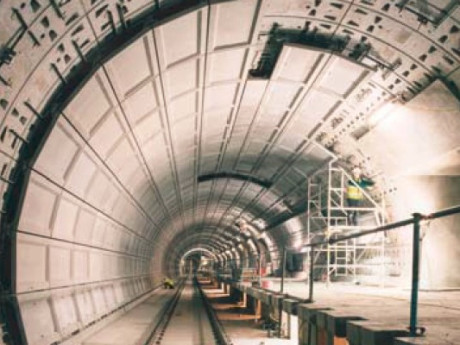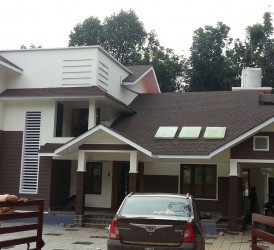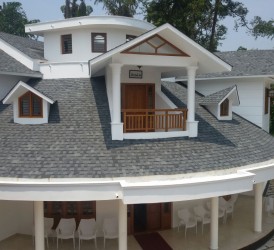Glass-fibre reinforced concrete (GRC) – a composite of a cement/fine aggregate matrix with glass fibres – is one of the most versatile building materials available to architects and engineers, and has been used since the early 1970s for a wide variety of applications worldwide, including cladding, façade renovation, noise barriers and permanent formwork.
Properties of GRC and Design
GRC is a cement-rich low permeability composite, and as such has a high chemical resistance and a very low rate of carbonation, giving a high degree of durability. It will normally contain no steel reinforcement, and therefore does not have the same durability concerns and cover requirements as steel reinforced concrete.
The combination of high modulus glass fibres and a high quality cement matrix leads to a composite with predictable properties which are well understood and well documented. Although many GRC formulations have a high ultimate failure stress and a ductile failure mode, the design of GRC products adopts a conservative approach and the design is performed within the elastic limits of the material (i.e. the design stress will be below the critical stress level at which the first cracks appear in the GRC matrix). This is best demonstrated with reference to a typical flexural stress / strain curve (Figure 1). This approach is different from the design of steel reinforced concrete, which is designed to crack, but in a manner controlled by the steel reinforcement.
Cem-FIL® 60
Cem-FIL® Chopped Strands for Repair Mortars and Premix GRC
Cem-FIL® 60 is a high integrity AR glass fibre chopped strand designed for premixing with other materials and the resulting mix is formed by vibration casting or other processes into moulded.
GRC components. It can also be used as a component of repair mortars to enhance their performance. The high integrity of the product makes it suitable for use in a variety of production processes including vibration-casting,pumping, spraying, or dry-blending with other materials.
Cem-FIL® 60 chopped strands are designed for ease of incorporation even at high dosage and remain integral during mixing. It is used in the manufacture of repair mortars, standard GRC.
components such as drainage channels or meter boxes, or in architectural applications such as decorative screen walling and ornate mouldings. Cem-FIL® 60’s hydrophobic behaviour makes the mix more fluid and that ensures better compaction and easier release of trapped air.
Cem-FIL® 61
GRC Premix and Spray Roving
Cem-FIL® 61 is an Alkali Resistant glass fiber assembled roving designed for use in the manufacture of glass fiber reinforced concrete (GRC) composites by both premix and simultaneous spray methods. In the premix process, Cem-FIL® 61 is chopped into small strands with high abrasion resistance. The fiber remains integral and this provides easy incorporation into the matrices and efficient workability.
Cem-FIL® 61’s new sizing technology reduces the water absorption of the fiber strand, allowing a reduction in the water content of the matrix, or an increase in the fiber content. In the spray process, Cem-FIL® 61 has good split efficiency and easy chopping with low fuzz generation.
Cem-FIL® 61’s hydrophobic behavior makes the mix more fluid and that ensures better compaction and easier release of trapped air.
Manufactured by : Owens Corning Composite Materials LLC
- 1 Owens Corning Parkway, Toledo, OH 43659, U.S.A.
Exclusive Distributor (Industrial Floor Segment)
Petroguard Canopy Systems
- 11, Asmita Garden II, Poonam Sagar Complex, Mira Road,
- Thane 401 107, Maharashtra, India
- Phone:+91 22 6529 8317
- Mobile: +91 9769244125
- E.mail:info@petroguardcanopy.com
- Website: www.petroguardcanopy.com
- Branches:Mumbai /Bangalore /Cochin /Coimbatore









